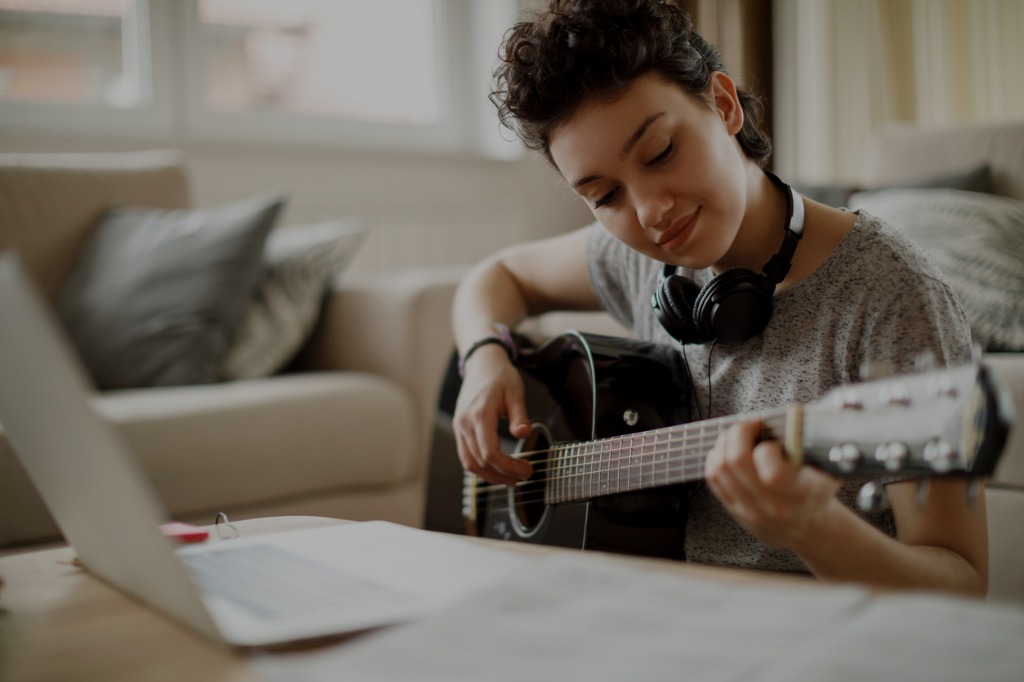Will we use this disruption to invent a new future or will we race back to “normal” and ignore everything we’ve learned over the past two months?
Lindsy Ogawa, Director of Practice and Field Advancement
Education Reimagined is hosting an on-going series of Lab Forums for learner-centered leaders in The Learning Lab and SparkHouse communities. Each week, we will be highlighting the insights that emerge from those conversations. The first forum touched on why they were uniquely prepared for the COVID-19 pandemic. The second focused on the power of trusting relationships. The third showcased how learner-centered leaders are strengthening their communities. The fourth challenged us to take full advantage of the new flexibilities the current moment is providing. And, the fifth and final for this series invites us to acknowledge what real, authentic learning looks like.
Education is in a particularly unique moment where the limiting and inequitable factors of the system’s design are hard to ignore. And, a moment where the opportunity to make a meaningful difference in transforming that design has never been greater.
Many states are forgoing conventional state-wide assessment practices for the year. Many educators are being granted the freedom to observe and support the unique needs of their young people and families in ways that standardized protocols could never allow. Young people, whether catalyzed by their school or simply by their extended time at home, have the space and time to deeply explore their unique curiosities and interests. And, families and community members are becoming increasingly present to what they value for themselves and their children—such as togetherness, empathy, joy, and good health. In turn, they are beginning to ask how their children’s education is and isn’t prioritizing those values.
Families, schools, and communities have all needed flexibility to healthily manage this moment. And, this level of flexibility has provided an organic opportunity to wonder about and invent things that will be useful far into the future, since everything—schools included—has been disrupted.
So, the question is: Will we use this disruption to invent a new future or will we race back to “normal” and ignore everything we’ve learned over the past two months?
This is a question on the minds of many learner-centered educators and young people across the country—some who have been coming together to talk about questions like this one in our weekly Lab Forums. On our fourth forum, we focused on something that has felt increasingly true amongst learner-centered leaders: How can this be an opportunity to not only do “online” learning but to roll up our sleeves and build like we’ve never built before? And, in this particular conversation, the focus was on what the different levers of change—whether at the system, practice, or personal level—we need to keep in mind if we are to build something today that outlasts this pandemic moment we’re currently in.
As you read through each section, we invite you to see these takeaways as an opportunity to pause and think about your own work and how you might move forward with your transformation efforts. And, lead your community to a future where current limiting and inequitable factors are no longer embedded within the design of your education systems.
As we think about change, what can be done to lift the voices of young people and act in accordance with the ideas and information they provide?
Educators often talk about the joy and excitement their learners come to school with after summer break and how quickly it extinguishes over a matter of a few weeks. What could we learn from that? In many ways, summers provide young people with a taste of learner agency. And now, as we look to children returning to school in the fall with five full months of learner agency taste-testing under their belts, “school-as-usual” might be met with noticeable resistance.
Will this be the time we start listening to young people when they express their frustration, rather than labeling any disruptive behavior as “out of line” or “defiant”? While the voices of young people will be key to creating a learner-centered education system, it won’t be enough if adults are unable to listen.
To ensure the voices of young people are heard and acted upon, we need to support adults confronting their own age- and race-based biases. To overcome these biases, it takes ongoing reflection and practice—a single PD session won’t cut it.
We must also partner with our young people and families to be able to use their voice. Our young people and families might not be immediately able to easily answer questions related to their needs and wants—regarding their learning needs or otherwise. It might be unfamiliar territory.
The conventional system has always assumed what young people will need. So, we need to be patient in these conversations. We need to build trusting relationships in which families are comfortable speaking.
With these kinds of relationships as a foundation, the voices and power of young people and their families can be brought to bear in partnership with learner-centered leaders in reinventing what education looks like from the individual experience of a child all the way up to a fundamentally transformed system.
So, what new learning models could we be inventing, if we weren’t to go back to “school as usual”?
If we want to build off the lessons we’ve learned during this challenging moment, listen to what young people and their families are calling for, and set any preconceived notions aside, what could be possible? Maybe, we could start imagining what a fully unconstrained learner-centered learning journey might look like.
We might lean into open-walled opportunities in ways we haven’t even considered—removing the notion that young people are limited to learning inside a single building. Imagine a young learner, with the support of their primary educators, designing their learning journey based on their personal interests and goals, rather than the limitations of standard subjects and curriculum.
They might enroll in Statistics at their Virginia high school and LGBTQ Studies—led by a well-known activist—through a community college in Oregon, intern at a local homeless shelter, teach live-streamed guitar lessons to a global audience, and connect with their advisory group (sometimes virtually, sometimes in-person) at the end of each day to discuss what they are learning and what they need to continue thriving. For each learner, with the world at their fingertips, these learning journeys would be as unique as they are.
Leaning into open-walled learning would naturally require us to reimagine our rigid school calendars and schedules. Young people and adults no longer need to relate to learning as an 8am-3pm endeavor. Rather, we can see it as a 24/7 phenomenon that allows for more flexible ways to relate to learning, which might include evening classes, apprenticeships and jobs, or even what is often thought of as “play time” to dig into hobbies or start a new project.
With each new “reimagining,” another appears. We could then be rethinking the roles of educators, students, families, our communities, and school buildings. What if we really leaned into the notion that our community (and the world) is a playground for learning? That our brick-and-mortar school buildings, rather than a place to learn academic content, became a place to plan for your future and be with trusted adults and peers in ways technology can’t provide? And, educators and their peers became each other’s mentors—responsible for each other’s success and well-being? If we keep asking the questions, we’ll keep driving ourselves toward the transformed future we’re itching for.
If we believe learning is a 24/7 phenomenon, how will young people show their learning?
Opening the walls of learning begs the question: How will we effectively identify, capture, and talk about “learning”? If learning isn’t happening in a classroom nor supervised by an educator as we’ve conventionally thought, what are the ways to prove and document it? Even beyond this pandemic, what are the ways to capture the skills gained when learners are caring for their grandparents, translating documents for their immigrant parents, or teaching themselves to code?
And, in what ways are we ensuring learning disparities aren’t showing up across lines of race, socioeconomic standing, brain wiring, and neighborhoods? (And, if they are noticed, how can we adjust for them?)
This new system will need new outcomes—ones that focus on the development of the whole human being where each person, thriving and learning, is equipped to lead meaningful and fulfilling lives now and into the future.
Competency-based systems provide a potential foundation for much of this. They can capture the unique skills and knowledge of our children and open the door for them to develop dispositions toward learning that will enable them to see learning as a lifelong pursuit. Rather than seeing grades and standardized tests as the only vehicle to prove one’s acquisition of knowledge, portfolios, flexible learning plans, and community-peer-professional feedback can be captured to express and reflect on each young person’s authentic learning experiences.
So, if we go up a level, what opportunities are there to enroll legislative stakeholders into learner-centered education?
If learner-centered education is to exist beyond isolated models and supported to be sustainable, new systems, structures, and policies will be pivotal. Right now, many learner-centered educators are tasked with keeping the trains running full-time, while simultaneously designing and building rocket ships. If that sounds difficult, it’s because it is.
Building for the future, while remaining tied to the past, is time-intensive and draining—these are two tasks and thus, require different muscles to do them. These leaders need to be relieved from those old requirements, so they can focus all of their effort on the transformative future they’re building.
That relief must be enabled from the top. When we talk about systems-level change, one major piece is the need for new openings and opportunities in the policy landscape. We have to paint a clear and convincing picture for policymakers that shows what a learner-centered system could look like and what it will make available for every child they represent.
Education policy conversations frequently revolve around “fixing” what isn’t working. Providing policymakers and other key stakeholders with a brand new picture—one that has proof points from current learner-centered work and new considerations regarding learner-focused accountability systems, financial structures, and schedules—relieves them from often circuitous conversations and has the potential to garner unexpected attention.
This is obviously easier said than done—the system is a behemoth. Money, new systems and policies, and navigating special interest groups, will play pivotal roles for creating system-wide change. It won’t happen overnight, but with each new and continuing conversation, what was once a someday, way-out-in-the-future dream could turn into real support to sustain learner-centered education right now.
There is reason to believe the majority of schools will, in fact, go back to some kind of “normal” come fall, but for those who see this moment as the moment to transform, we can move ever closer to the tipping point where a high-quality, learner-centered education becomes truly available for every single child and family who wants it. Are you ready to create a new normal in your community?

